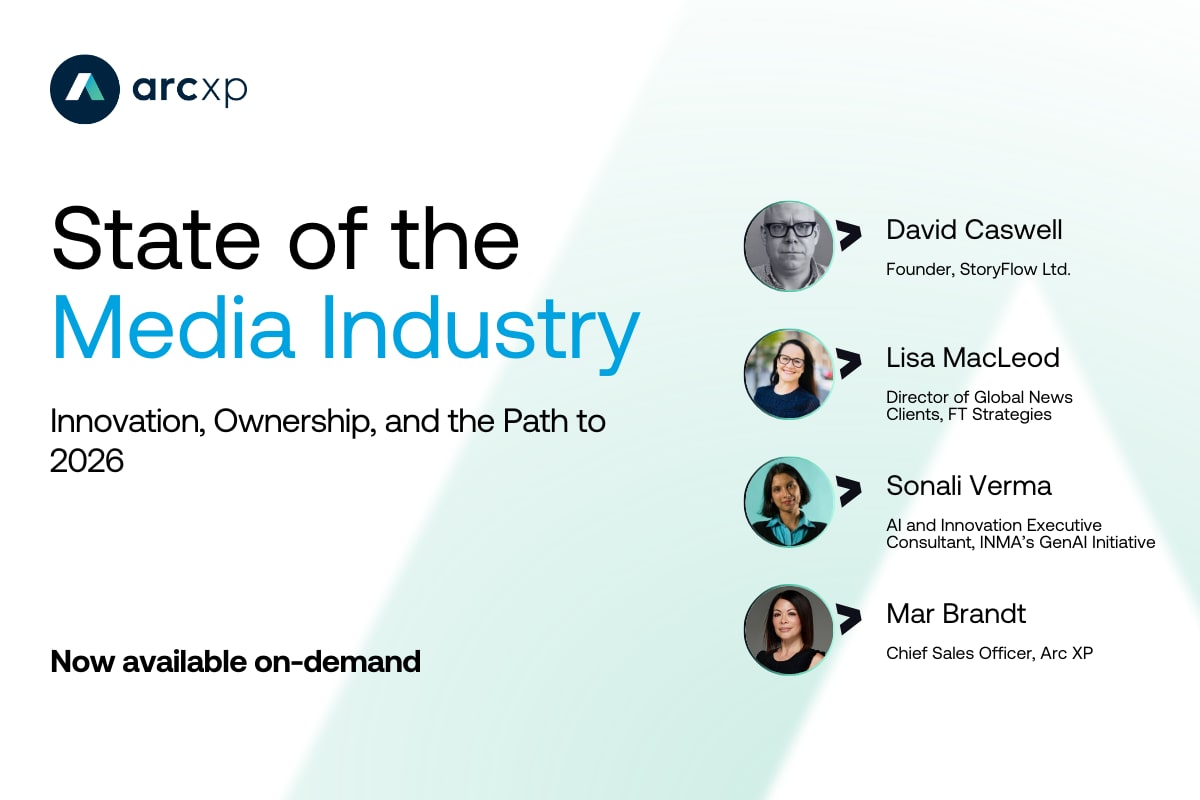First Impressions Matter: How Publishers Can Build a Homepage That Captures Attention and Drives Action

Your homepage is your first impression, your pitch, your handshake. It’s what greets users when they show up—and it needs to deliver. Aaron Schmidt, Design Lead at Arc XP, is a passionate designer and user advocate who excels at UX strategy and product design.
With 20 years of experience in web design, he has seen what works (and what doesn’t). Here’s his take on how to build a news homepage that’s high-performing, audience-focused, and strategically designed to drive engagement and revenue.
The Three Must-Haves of a High-Performing Homepage
The best homepages are intuitive, fast, and personalized. They guide users seamlessly rather than forcing them to figure things out. Aaron, explains:
“Rarely do people casually browse a website anymore—they visit with a purpose. If they encounter slow performance, poor navigation, or a lack of relevant content, they’ll leave.”
To ensure retention, Aaron broke down three must-haves for a high-performing homepage:
- Give users what they came for: If a visitor lands on your homepage, they have a goal—to catch up on breaking news, find a specific story, or discover relevant content. Your job? Provide a clear and direct path to help them achieve it. Well-organized sections, strong editorial curation, and personalized recommendations can make all the difference.
- Communicate your brand—clearly: Readers should instantly recognize your publication’s identity and trust its authority. Brand identity isn’t just about logos or taglines—it’s in how your homepage feels and functions. A strong editorial voice, consistent design, and smart content hierarchy reinforce credibility and keep readers coming back.
- Provide a next step for everyone else: Not every visitor falls neatly into the first two categories. A well-designed news homepage ensures they don’t leave empty-handed. Whether through trending topics, editor’s picks, or newsletters, give them an easy way to engage further.
Balancing Discovery, Engagement, and Monetization
There’s no one-size-fits-all approach—it all depends on a publisher’s strategic goals. Need to grow readership? Prioritize content discovery. Want to maximize subscriptions? Optimize for engagement and conversion.
“The best homepages aren’t static,” Aaron explains. “They evolve with the publisher’s needs. Media organizations should use analytics to understand where readers are going, what content is performing, and what needs improvement.”
UX: The Make-or-Break Factor
A homepage’s user experience (UX) is crucial in determining whether a visitor becomes a loyal reader or bounces in frustration. At the heart of a great UX are three core principles: speed, navigation, and personalization. In this day and age, rarely do people casually bop around a brand’s website, looking in all the corners, curious about what’s there. They’ve spent a small amount of their precious time and attention to achieve a goal or complete a task. If performance is slow, navigation is clunky, or the experience feels impersonal, they’ll leave.
Bad UX choices will result in lost readers. Consider annoying ad placements that interrupt the reading experience or a homepage cluttered with irrelevant content—these are fast ways to drive users away.
Curating content effectively is just as vital. Publishers need to be aggressive about surfacing relevant, up-to-date content. “Readers expecting breaking news, media that relates to them, or something fresh—but instead encountering a mess of old or irrelevant content—will really remember it when deciding where to spend their attention and time. That may seem obvious, but it’s critical.”
As Aaron points out, “To truly understand the impact of page speed, navigation, and personalization on audience retention, imagine what the user experience would be like if these factors were missing.”
When done right, these elements should work seamlessly behind the scenes, enhancing the user experience without drawing attention. But when they fall short, they immediately become the user’s focus—and the reason they’ll leave.
Monetization Without Killing UX
Want to drive revenue without turning readers away? Always make sure the reader comes first. If they can’t find value on a publisher’s site—especially with the homepage being their first impression—then all revenue is at risk. Focus on delivering on the reader’s expectations first, and then experiment with monetization thoughtfully and consistently.
Aaron warns against homepage design trends that try too hard to grab attention. “Anything that auto-plays, moves aggressively, or forces engagement? It’s usually a bad idea.”
As for balancing paywalls and ads? “Think about what keeps the reader engaged. If monetization efforts disrupt that, they’re working against you.”
The Future of Homepages
The homepage isn’t going anywhere, but it’s evolving fast.
- More organic, reader-aware experiences: Deep, multi-channel personalization is just beginning. The best approach will be intuitive, built on trust with the reader—without being invasive or creepy.
- Editorial superpowers: AI and automation will give editors the freedom to focus on what truly matters—delivering content that’s both broad and meaningful to the reader. This will be key to avoiding filter bubbles and preserving the integrity of the publisher’s content.
- A homepage that extends beyond itself: The best publishers think beyond their homepage, ensuring their entire digital ecosystem—from apps to newsletters to social platforms—works together to engage audiences.
The Boldest Move Publishers Should Make Today
Stop thinking about the homepage as a standalone experience. Think about it as part of a broader reader journey, one that spans platforms, channels, and interactions. When your homepage seamlessly connects with the rest of your brand’s digital ecosystem, you’re not just meeting expectations—you’re exceeding them.
A high-performing homepage doesn’t happen by accident. It’s a product of strategic thinking, rigorous UX, and a commitment to delivering value to the user—every time they land on your page. Get that right, and the rest (engagement, monetization, loyalty) follows.
Recent resources




